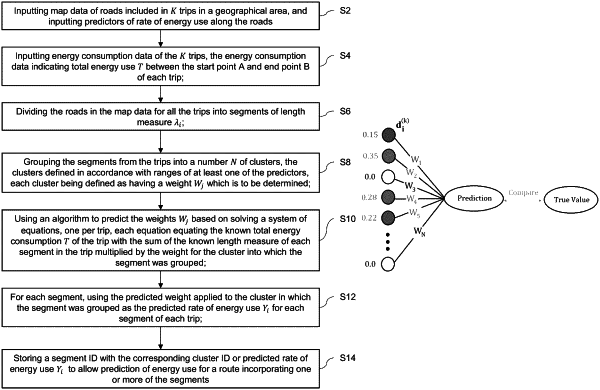| CPC G01C 21/3469 (2013.01) [G01C 21/28 (2013.01); G06N 3/08 (2013.01); G06N 5/02 (2013.01); G06N 20/00 (2019.01)] | 15 Claims |

|
1. A computer-implemented method of predicting energy use for a route comprising:
inputting map data of roads included in K trips in a geographical area, and inputting predictors of rate of energy use along the roads;
inputting energy consumption data of the K trips, the energy consumption data indicating total energy use T between a start point A and an end point B of each of the K trips;
dividing each of the roads in the map data for all the K trips into segments of length measure λi;
grouping the segments from the K trips into a number N of clusters, the clusters being defined in accordance with ranges of at least one of the predictors of rate of energy use and each cluster being defined as having a weight Wj which is to be determined;
using an algorithm to build a model predicting the weight Wj based on solving a system of equations, one per trip, each equation equating a known total energy use T of a trip with a sum of a known length measure of each segment in the trip multiplied by a weight for a cluster into which a segment was grouped;
for each segment, assigning the predicted weight Wj applied to the cluster in which the segment was grouped as a predicted rate of energy use Yi; and
storing a segment identifier (ID) with an indication of the predicted rate of energy use Yi to thereby allow determination of a prediction of energy use for the route in the geographical area based on collective processing of one or more segments among the segments grouped into the clusters.
|